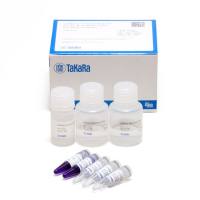Morphometric Analysis of Huntingtons Disease Neurodegeneration in Drosophila
互联网
461
Huntington’s disease (HD) is an autosomal dominant neurodegenerative disorder. The HD gene encodes the huntingtin protein
(HTT) that contains polyglutamine tracts of variable length. Expansions of the CAG repeat near the amino terminus to encode
40 or more glutamines (polyQ) lead to disease. At least eight other expanded polyQ diseases have been described [1]. HD can
be faithfully modeled in Drosophila
with the key features of the disease such as late onset, slowly progressing degeneration, formation of abnormal protein aggregates
and the dependence on polyQ length being evident. Such invertebrate model organisms provide powerful platforms to explore
neurodegenerative mechanisms and to productively speed the identification of targets and agents that are likely to be effective
at treating diseases in humans. Here we describe an optical pseudopupil method that can be readily quantified to provide a
fast and sensitive assay for assessing the degree of HD neurodegeneration in vivo
. We discuss detailed crossing schemes as well as factors including different drivers, various constructs, the number of UAS
sites, genetic background, and temperature that can influence the result of pseudopupil measurements.



![四[N-邻苯二甲酰-(S)-叔亮氨酸基]二铑双(乙酸乙酯)加合物;154090-43-4;Elemental analysis(Nitrogen) 3.30 to 4.50 %;V66234-25mg](https://img1.dxycdn.com/p/s14/2025/1029/004/8672158669127143891.jpg!wh200)




